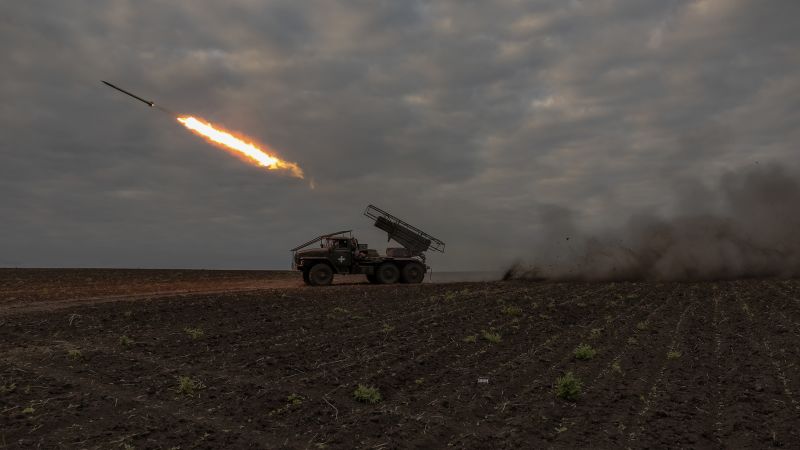NATO defense ministers are expected to finalize an agreement on Friday that will give the alliance greater control over security assistance and training for Ukraine’s military, an attempt some officials say is meant to give Europe greater responsibility over the aid amid uncertainty over the outcome of the US presidential election this fall.
The possibility that former President Donald Trump, who has long been skeptical of providing US military support to NATO and Europe, could win the election “is a huge part” of why NATO is moving forward with the consolidation plan, said one official familiar with the discussions. It is also a way to give Europe more responsibility over the training and equipping of Ukraine as the extent of the US’ commitment to supporting Ukraine in the war against Russia after the election remains unclear, the official said.
NATO Secretary General Jens Stoltenberg announced the intent in a news conference on Thursday, saying NATO provides “more than 99% of all military support to Ukraine … so it makes sense that NATO takes on a greater role in these efforts.”
“This will put our support on a firmer footing, provide predictability for Kyiv, and address both immediate and long-term needs,” Stoltenberg said.
Stoltenberg added that the effort will be headquartered in Wiesbaden, Germany and fall under NATO command, led by a 3-star General reporting to the Supreme Allied Commander Europe, Gen. Chris Cavoli, who is also the head of US European Command.
Earlier in the day on Thursday, Stoltenberg said the “whole idea” of the new framework was to “minimize the risk for gaps and delays” — particularly after a months-long delay by the US in providing additional security aid had real negative impacts on Ukraine’s ability to fight Russia.
“[T]he whole idea is to minimize the risk for gaps and delays as we saw earlier this year, because the gaps in delays in both the provision of military support from the United States but also from several European allies, made a difference on the battlefield,” he said. “It is one of the reasons why the Russians are now able to push and to actually occupy more land in Ukraine.”
Stoltenberg also said Thursday that he has proposed NATO allies provide Ukraine a minimum of 40 billion euros a year “for as long as it takes” — a number that he said allies have already approximately provided annually since Russia’s invasion in February 2022. Ukraine needs the annual funds “to ensure they have the resources to repel Russian aggression against their country,” he said.
CNN previously reported the options around ensuring long-term support for Ukraine, which one senior European diplomat described at the time as “future-proofing.”
A senior US Defense Department official told reporters on Thursday it was important to ensure that the capabilities and troops assisting Ukraine is being done with “an eye … towards NATO interoperability and integration.”
“[R]ight now it’s pretty ad hoc,” the official said. “A nation raises its hand and says, ‘I’ll do the artillery coalition,’ another says, ‘I’ll do the drone coalition’ — who’s actually sitting down and mapping these things out and making sure that that force that’s being built is going to make sense to deter and defend against what Ukraine needs to deter and defend against? Who’s thinking through the extent to which that force is interoperable with Polish forces, for example.
Earlier this week, the plan to centralize the alliance’s military support for Ukraine overcame a major hurdle when Hungarian Prime Minister Victor Orban said that while Hungary will not participate in the scheme, it will not veto it.
“The prime minister has assured me that Hungary will not oppose these efforts, enabling other allies to move forward, and he has confirmed that Hungary will continue to meet its NATO commitments in full,” Stoltenberg said on Wednesday.
The Ukraine Defense Contact Group and NATO defense ministers’ meetings are happening in Brussels as a Group of Seven nations summit in Italy is taking place, where support for Ukraine remains a top issue. Leaders of G7 nations have agreed to loan Ukraine money backed by profits from frozen Russian investments.
CNN previously reported that the loan amount totals roughly $50 billion, which is expected to be delivered by the end of 2024 — before a potential change in US administrations.
The US and Ukraine are also expected to sign a long-term security agreement at the G7 summit, after months of negotiations, but could ultimately be undone by a new administration.
Read the full article here



